Peel & Reveal labels have taken the packaging industry by storm, offering a creative and versatile solution to a wide range of industries. Their innovative design, featuring multiple layers, allows brands to show more information and engage customers in new ways. So let’s explore the benefits of Peel & Reveal labels and their applications across different market sectors.
Peel-and-reveal, peel-and-read, or multi-layer labels—whatever you prefer to call them—consist of multiple layers, typically a top layer that can be peeled back to reveal additional information or content underneath. This unique design allows for an interactive and engaging experience, inviting customers to explore the label and discover what lies beneath.
Peel & Reveal labels can be beneficial in several market sectors, including:
Food and Beverage: Brands can use Peel & Reveal labels to provide nutritional information, allergen warnings, or recipe suggestions while maintaining a clean and appealing label design.
Pharmaceuticals and Healthcare: Peel & Reveal labels can be used to display dosage instructions, drug interactions, or safety warnings while keeping the primary label easy to read and uncluttered.
Personal Care and Cosmetics: Peel & Reveal labels can be used to list ingredients, provide usage instructions, or offer beauty tips without compromising the product’s aesthetic appeal.
Household and Industrial Products: Brands can utilise Peel & Reveal labels to provide safety information, usage guidelines, or multiple language translations without overwhelming the primary label design.
Promotional and Marketing: Peel & Reveal labels can be used to hide discount codes, reveal contest entries, or surprise customers with engaging content that boosts brand awareness and customer loyalty.
Don’t forget to show your customer where to peel! Our artwork and technical team specialise in crafting the perfect peel-and-reveal label for you. However, the end-user might not be familiar with the finer details—they simply need clear guidance on where to start peeling!
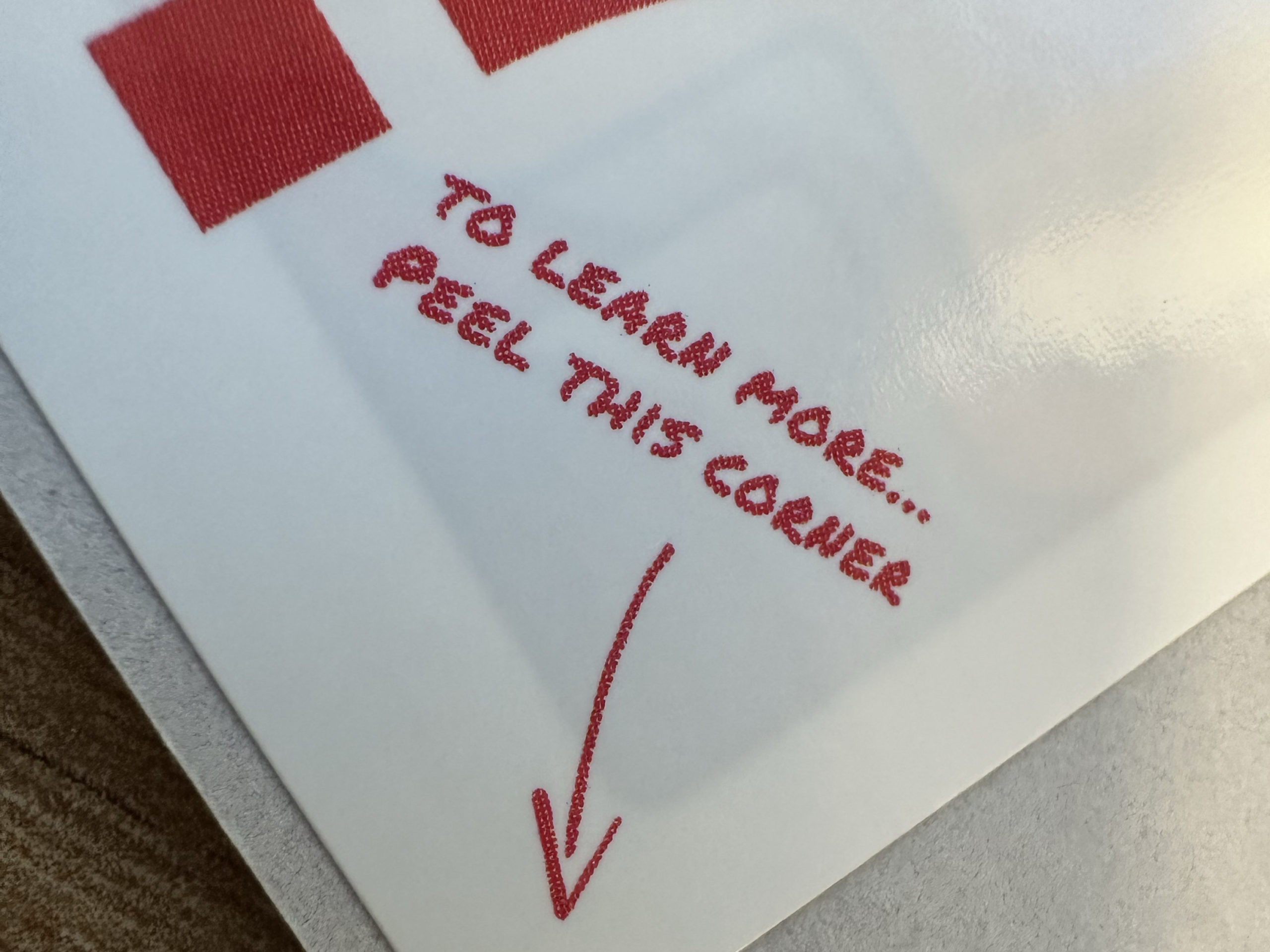
Peel & Reveal labels are an innovative solution that offers versatility, increased real estate, and enhanced engagement. Their adaptability across various industries makes them an invaluable asset for brands looking to maximise their product’s potential and create a memorable customer experience.
At Hine Labels, we take pride in our long-standing reputation for providing high-quality self-adhesive labels, tickets, and non-adhesive tags. Our clients have trusted us for almost 50 years, and we’re always looking for ways to enhance our service and offer the best products possible. One partnership that helps us achieve this goal is our collaboration with AB Graphic International.
AB Graphic International, a leading label finishing equipment manufacturer, specialises in developing cutting-edge label converting equipment, such as slitting, rewinding, and inspection machines. The Hine Labels’ partnership with AB Graphic International has enabled us to integrate their state-of-the-art technology into our production process, ensuring that we deliver exceptional labels for our clients.
Here are a few ways our partnership benefits our valued clients:
Quality Assurance: AB Graphic International’s high-precision equipment allows us to produce labels with immaculate accuracy, ensuring consistency in the quality of our products.
Efficiency: By utilising AB Graphic International’s advanced machinery, we can complete orders quickly, with reduced downtime and improved efficiency. This means shorter lead times for our clients, helping them meet their deadlines.
Innovation: Our partnership with AB Graphic International provides us access to the latest industry advancements, allowing us to incorporate innovative solutions into our products and services.
Flexibility: The wide range of finishing equipment from AB Graphic International enables us to cater to various label specifications and requirements, offering customised solutions for our clients’ unique needs.
As we continue our collaboration with AB Graphic International, we remain committed to delivering exceptional results for our clients, embracing new technologies, and staying at the forefront of the label printing industry. Hine Labels is proud of our successful partnership with AB Graphic International, and we look forward to building on our shared success for years to come.
This was a fun product, working with a local beekeeper who turned their hobby into a business! From idea to label, Hine collaborated with Derwent Honey to produce professional, eye-catching labels for their sweet produce and elevate their business to the next level. You won’t bee-lieve the results!
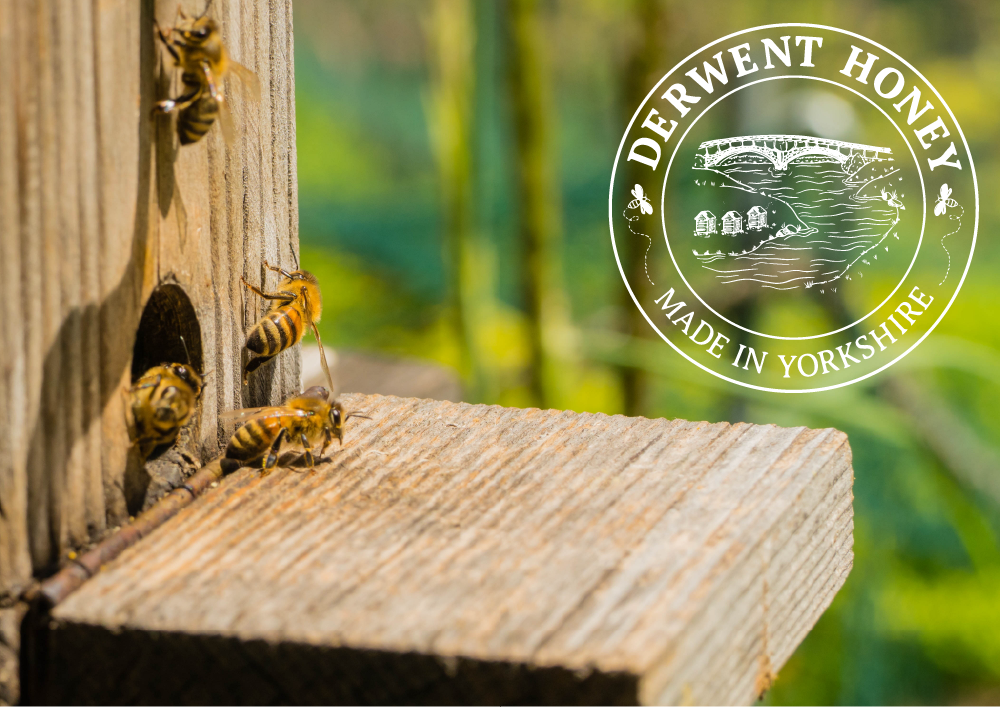
Derwent Honey began five years ago when two friends, Jon and Tony, from York started chatting bees and honey whilst working on a community project. From there, they attended a local beekeepers association training course and the rest is history!
Five years later, they are now established Yorkshire Bee Farmers, producing high quality Yorkshire honey from their very own Yorkshire bees and doing it very well!
Bee farming, also known as apiculture, can be good for bees in certain cases. Jon and Tony’s domesticated bees are managed in a way that provides many benefits to the bees, such as protection from disease and parasites and access to a stable source of food and water. Beekeepers can help to increase the number of pollinators in an area, which can benefit plant population and lead to healthier ecosystems.
When distributing their honey, Jon and Tony are focused on low food miles and quality produce, providing a sustainable product to the residents of Yorkshire. Go Derwent Honey!
Using a little Dymo Thermal Printer to print their own labels was taking too much time and energy, plus their labels were starting to show their age. Jon and Tony wanted an alternative to professionally establish their brand and ethos, so they made the decision that it would be more efficient to use professionally produced labels in colour and on a roll with a more consistent and quality appearance. Luckily, they had seen Hine Labels on Instagram and really liked the friendly feel!
The new logo had already been designed with the help of a local artist, and Jon and Tony had some idea about the imagery they wanted to use. But they needed some guidance when designing the label. Things like what materials, colours, and embellishments are available to truly communicate who they are as people passionate about environmental sustainability. They also needed a barcode on their labels, which Hine was easily able to help with!

After some consulting with the Hine Customer Service and Design Team, Hine Labels invited the guys from Derwent Honey over to their offices in Rotherham to get their heads together, discuss ideas and nail down a label design over a Proper Yorkshire Brew!
Together they pulled all the elements they had to create the label designs. After wishing Jon and Tony a safe journey back to York following a few cuppas and a quick tour of the factory, Jasmine, one of our Designers at Hine Labels, set to work getting the labels ready for print!
Watch the video for a sneaky peek behind-the-scenes — see how the labels were made!
I think we can all agree this was a fantastic job done by all, it just shows how a small idea can become something amazing with the right team and the right help. And let’s not forget the wonderful Derwent Honey Bees who worked hard to produce this wonderful, tasty honey!
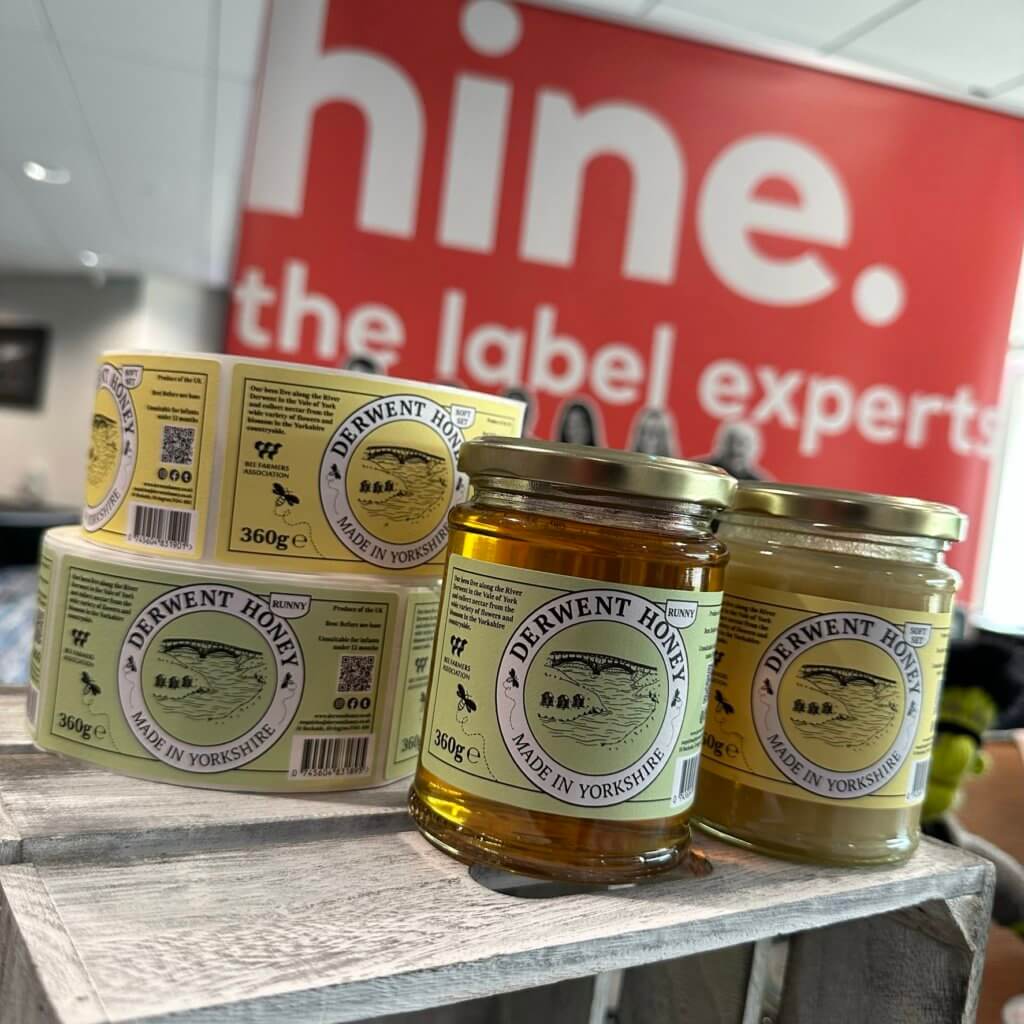
Jon and Tony were really pleased with their labels, they said that their overall experience with Hine Labels was great and would recommend Hine to similar start-up businesses.
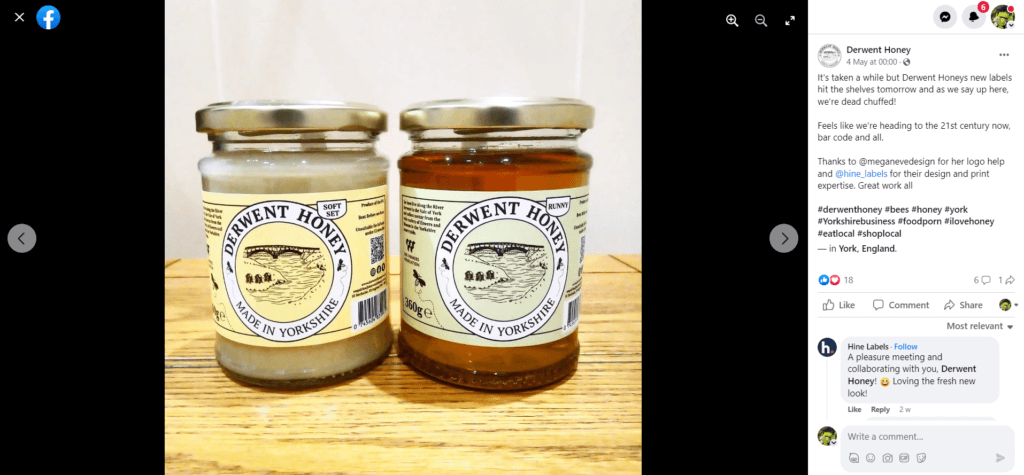
Derwent Honey were so proud of their new labels they couldn’t wait to post them on Facebook and Instagram!
In true Yorkshire fashion they stated, “Its taken a while but Derwent Honey’s new labels hit the shelves tomorrow and as we say up here, we’re dead chuffed!”
They said they felt like they were “heading into the 21st century now with their barcode and all!”
So what do we take from all this? How can startup businesses make their products stand out from the beginning? Get as far as you can with your designs, then ask for help! Label Converters and Manufacturers such as Hine have all the advice, tools, and expertise needed to guide you in your project. Don’t struggle alone!
Tony pointed out that, “smaller businesses spend a lot of time and energy solving the label issue invariably with average results. Many should go direct to label printers such as Hine Labels to start with a high quality product”
Jon added his advice to new startup businesses is to “price up professional printing as soon as you have a product to sell.”
Special thanks to Jon, Tony and the Bees at Derwent Honey for allowing us to follow their journey. Keep up the amazing work you do!
Personalisation goes beyond simply having your business branding on your products. Smart Personalisation is the interaction your customer has with your product and your brand.
My Alexa knows my name, I get in my car with BEX on the registration (sad, I know!) I switch on the TV; Netflix has personalised my homepage with titles I would enjoy. On social media, I can customise how content is presented to me. My phone pings, it’s a notification from Deliveroo asking if I am hungry… which I am!
Personalisation is about feeling ownership of something which has been produced on a mass scale. We feel in control when we know we’re not getting something generic or ordinary. We’re getting something which feels like it has been made especially for us.
The use of personalisation is a simple but effective technique for developing meaningful interactions with customers. It boosts both brand loyalty and engagement while accelerating business growth.
There are a few examples of brands using personalisation as a consumer engagment tool, and you’ll notice they are all big, household names. But that’s changing!
You’ll remember this one! In 2013 and 2014, Coca-Cola GB ran an advertising campaign called “Share a Coke.”
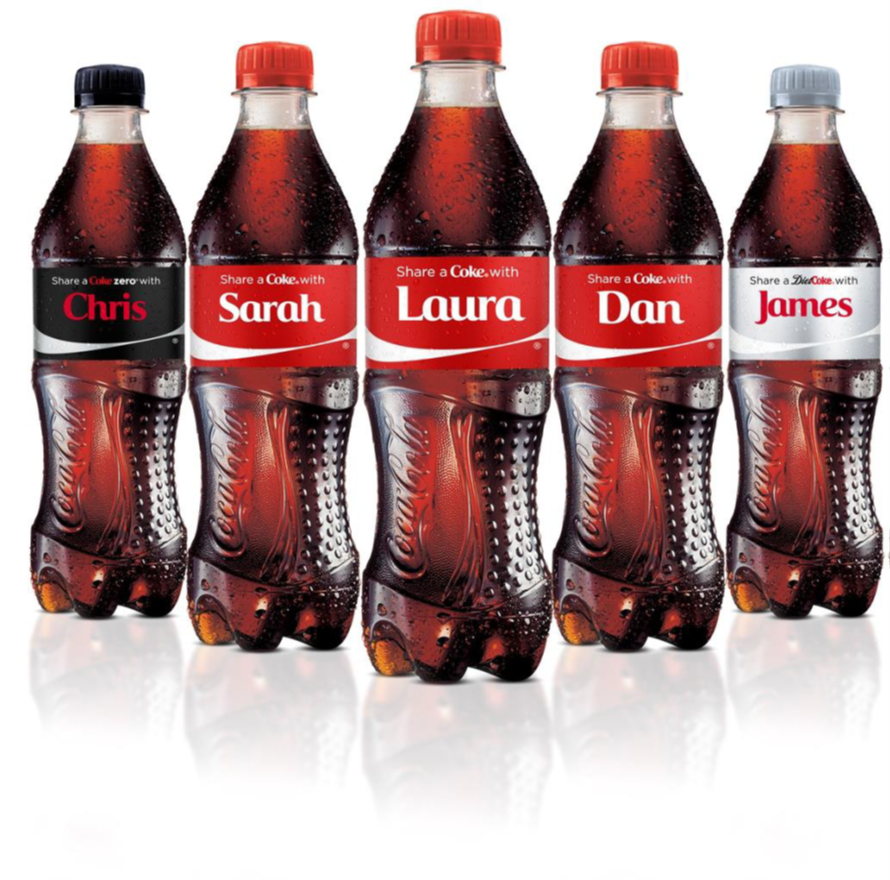
Coca-Cola labels were redesigned to include some of the nation’s most well-known names in place of the brand’s distinctive logo.
They collected a list of the most popular names in each of the UK’s regions. The printing process then randomised those names to make sure each batch of labels was unique.
It went viral!
Following the Coca-Cola campaign, AJ Barr, the makers of Irn Brew, decided to do their own take on it with Irn Bru’s ‘Bru’s your clan’ campaign.
In 2015, Scotland’s well-known national beverage, Irn Bru, teamed up with design studio Jones Knowles Ritchie to roll out a set of limited-edition packaging. Irn Bru bottle labels for the marketing campaign “Bru’s Your Clan” were decked out with tartan from various clans around the country. Using advances in digital printing, 57 distinct styles of tartan, covering up to 11,000 surnames, were released to the public on the bottle labels.
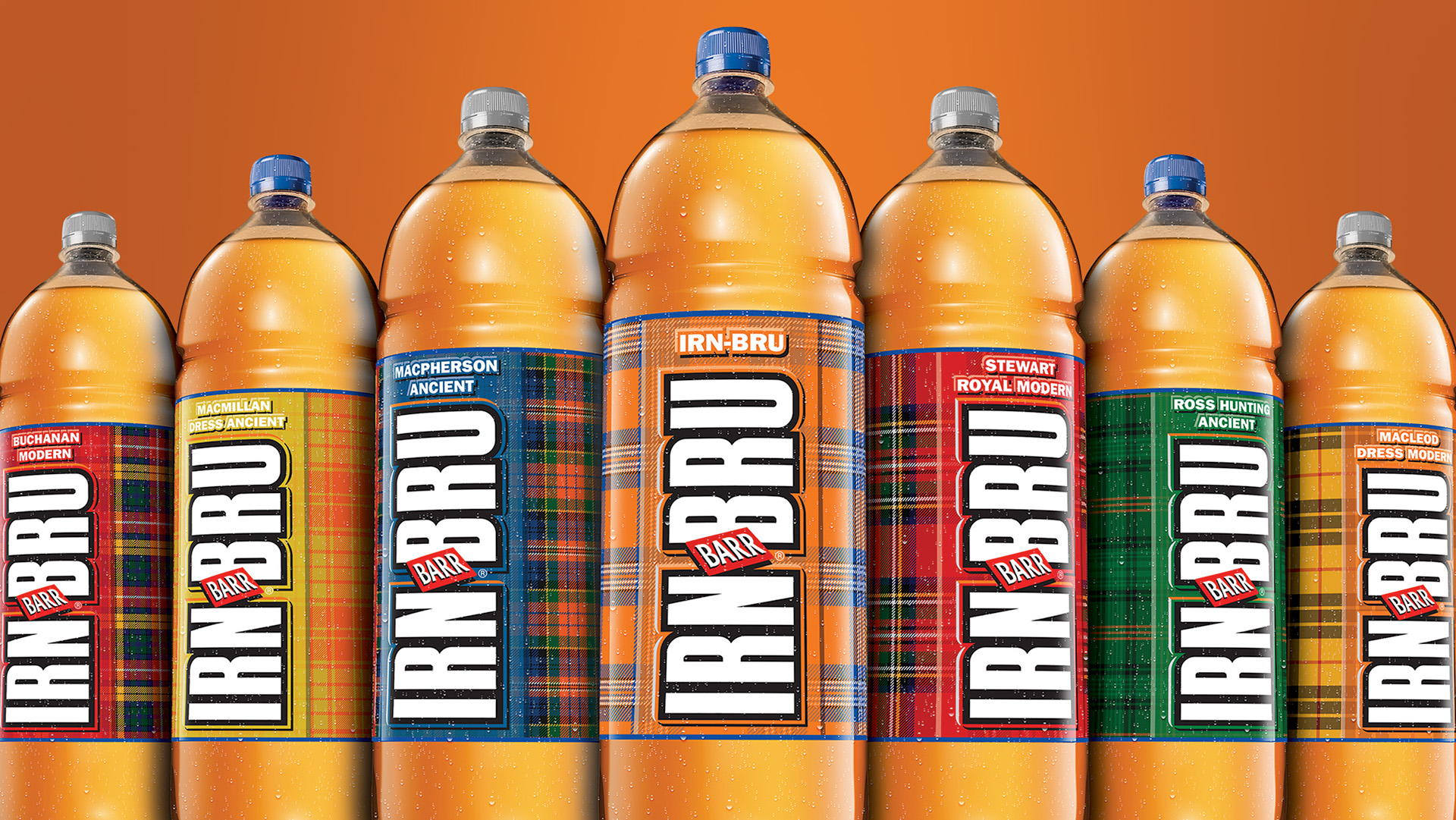
We all love a bit of Irn Bru, don’t we! Scottish consumers feel true pride and passion for the Irn-Bru brand. The tartan patterns made a statement on store shelves and sparked fresh discussions among the brand’s devoted customers.
This became an award-winning campaign, the outcome of which was an 18% increase in sales and a record number of visits to the Irn Bru website.
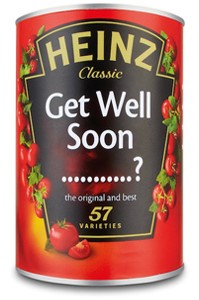
The Heinz “Get Well Soup” campaign inspired people to bring a customised can of soup to friends and family who were sick. The Facebook promotion let customers put their name next to the phrase “Get Well Soon” on the can. Some retailers even sold them with pre-printed names like “Grandma” and “Mum.”
The brand also partnered with the Starlight Children’s Foundation to raise money for seriously and terminally sick children.
The campaign invited customers to order a customised can of “Get Well Soup” from the Heinz Facebook page. Heinz gave £1 for every purchase to help fund events for children in hospitals.
We now live in an era where personalisation, or creating “every label is unique” packaging, is important to stand out and be a talking point. If used properly, print personalisation may be a powerful resource for companies to get their messages in front of the right people.
However, many small businesses miss out on the benefits of print personalisation because they are unaware of the print technology that makes it possible. Business owners can swiftly adapt to consumers’ ever-changing demands with the help of label manufacturers such as Hine Labels, who are equipped with a suite of advanced printing capabilities.
Harness the unique qualities of your brand’s personality – do it YOUR way.
Always put your brand’s identity first in your execution, as this will give you the best chance of gaining the trust of your target audience. Don’t just copy what others have done, do it your way and in a way that reaches your target audience and their core values.
Want to know how Hine Labels can help you do this? Speak to us. We’re more than happy to consult with you!
Researched and Written by Becky Morris. Edited by Rob Lucas. © Hine Labels 2023
Label buyers in the cosmetic and beauty industry are always looking for ways to create added value in the products they sell; regardless of whether the sales take place in-store or online.
Be it a lipstick or a foot cream, there’s a profound simplicity in their label packaging requirements, driven by what the consumer expects from brands big and small.
The packaging should be the first step in the process of making people feel good about themselves on the buyers’ journey – and be authentic when doing so.
Retailers need their products to project quality but are ethical – and this ethicalness should not just be reflected in the ingredients that go into the product, or is this product tested on animals, but also in the packaging’s level of environmental friendliness.
The up-and-coming generations with spending power are the Gen Z’s, the youngest being around 8 years old and the eldest is 25. The generation before Gen Z is “the Millennial,” ranging from 26 to 40 years old. Combined, this is a large area of consumers who are already driving brands to be more socially responsible and care about the earth. This is the future.
Most label converters like Hine will already understand Digital print allows for smaller minimum order quantities, variation of SKUs, and shorter lead times when compared to the more conventional methods.
The benefits are shared with the label buyer when labels are printed digitally. There is less make-ready time, and a customer can change designs and product ranges as frequently as they please. Got a Limited Edition product? No problem. We can manufacture just the right amount, meaning reduced waste and no need for vast warehouse storage.
At Hine, our digital printing presses are designed with the environment in mind, taking into account the supply chain. We operate at CO2 Neutrality and work to drive down the levels of energy and supplies required for each print. Hine also strives to reduce the environmental impact of its manufacturing and supply waste in its manufacturing lines.
Our partners at HP Indigo have established a program in collaboration with the Good Energy Initiative to offset carbon emissions associated with manufacturing. The carbon footprint associated with our manufacturing is calculated each year, leading to carbon offsetting projects such as reforestation and social investment in renewable energy including solar and biofuel.
You may need a permanent adhesive suitable for the surface contact and, because many cosmetic and beauty product labels will be machine applied onto the product containers – be it a tub, tin, or plastic tube – they need liners capable of dealing with higher dispensing speeds. That means not having to deal with web breaks leading to reduced productivity, and reduce paper dust on packaging lines.
What are your first thoughts when considering what should be included on labels for a new candle range? Scent? Company? Brand? Colour? Shape? Where it is made? What would Gwyneth Paltrow include in her candle?… 🤢
As a brand you might have thought of all the above to attract customers, but have you considered your responsibility to ensure consumers are warned of potential hazards? Have you considered guidance on how to use candles safely and what warning labels your candle should need, if any?
So let’s get down to it…

Across the UK, there are over one thousand house fires caused by candles each year. That averages out at 20 per week. Most of these incidents happen around the winter holiday period, especially Christmas time, as more candles are used and people tend to let their guard down a little during the festive period.
Good news, though! The number of house fires attributed to candles is falling. This reduction is, in part, due to the increase in consumer knowledge around candle safety and the introduction of effective safety warnings and icons on candle labels.
Is there much point in adding a warning label to a candle? Do candles have to have warning labels? I mean, it’s common sense, isn’t it? Candles have a flame. Flames are dangerous. Surely, everyone knows not to leave a candle burning unattended or near flammable items? Will people even read the warning labels or will they completely ignore them?
Yes, the British public and the average consumer will be educated on the dangers of fire. The fire service has done some great work in achieving this. However, the psychology behind how a person comprehends a warning sign is important to note. Leading us to our next question…
An increase in consumer knowledge around candle safety and the introduction of effective safety warnings and icons on candle labels has helped reduce fire casualties.
There are arguments on either side as to the effectiveness of warning labels on candles (guided by C.L.P. Regulations, more below!)
Some studies suggest that warning labels are effective, while others question their ability to get the message across. There’s quite a bit of stuff that goes on between the consumer and the warning label, and there are a variety of factors which can influence whether the warning label is effective or not. I’m not going to bore you with all the details, but here is a summary of the process:
All sounds straightforward right? However, we human beings are incredibly unique and complex creatures! We can sometimes find it difficult to understand why other people do the risky things they do (there’s a whole Bio-Psycho-Social model for that).
People weigh up risks in their heads, and those decisions are influenced by many things. We are doing it all the time, often without realising. Crossing the road involves a risk assessment, eating a piece of cake, should I have another beer or go home? If the importance of their goals, wants, or needs outweighs the potential risk, they may choose to ignore the warning.
So, the bit a candle maker really wants to know is…

Did you know a candle maker is known as a “chandler”? The name comes from “chandelier”, meaning an ornate, branched light fitting that held lots of candles! Before electricity, in stately homes, there was a person in charge of the household’s candles – an important and trusted role.
Yes, what exactly is the responsibility of a candle maker? What needs to be on a candle label? Obviously, the candle supplier cannot be responsible for each individual and the choices they make. That’s just crazy! 🤪 However, the choices made on the shapes, colours, positioning and pictograms used on the labels can help achieve Stage 1 – Get those warnings noticed! Job done.
The colours, shapes, and icons used in warning labels all send a message subconsciously to us. Most of us have unconsciously learned that triangular shapes and certain colours such as red and yellow mean warning or danger. Warning labels should alert the user to a potential hazard associated with the product without them realising, subconsciously making them more cautious.
According to British Trading Standards, it is a requirement that the General Warning Sign ⚠️ be included on all candle labels, preferably in colour.
There are also four mandatory safety messages which must be included on all candle labels. These may be given as a pictogram, text, or both.
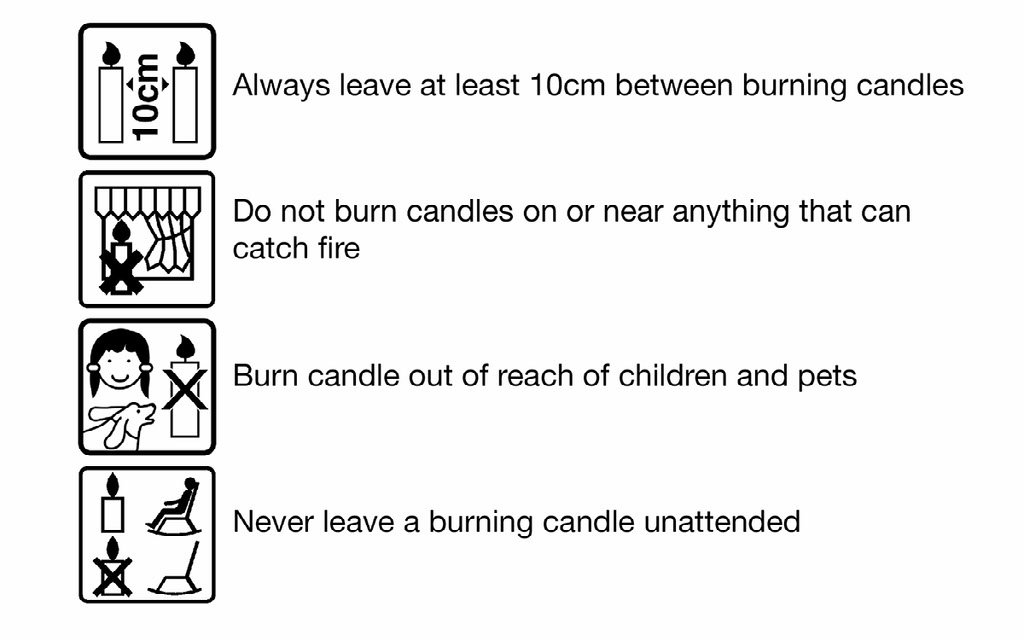
In addition, there are optional extra safety messages, which can be included on candle labels.
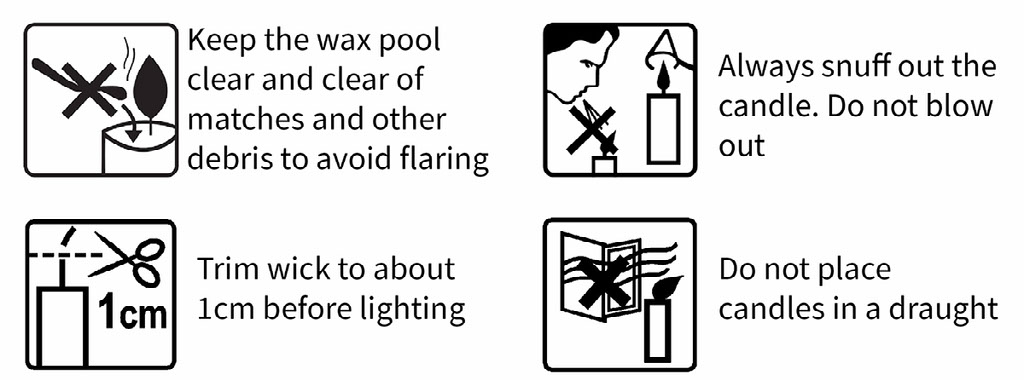
It is important that the warning signs be clear and legible, utilising the space provided to its full potential. Basically, not all squished up on a tiny label!
And what do we call that label dedicated to warning consumers of the dangers?
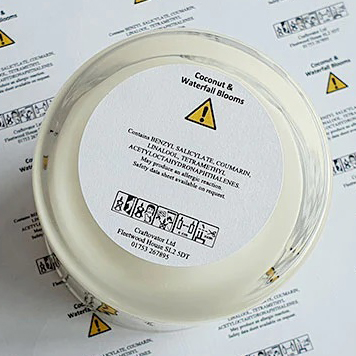
Classification, Labelling and Packaging.
The CLP label must be applied to any non-cosmetic product containing a hazardous substance such as fragrance or essential oils – that includes candles, wax melts, burner oils, room mists, and reed diffusers.
To sell your candles and home fragrance products to the public, you must ensure that all of your products are CLP compliant.
You can contact your local Trading Standards or the BCF (British Candlemakers Federation) with any concerns or queries.
Short answer: Yes!
The label may not get scrutinised in detail or even looked at by some candle users but the fact that it is there increases the chance of people considering their safety when lighting candles. Even if the message only reaches one person, it’s worth it isn’t it? So, spread the word, warning labels on candles are a good thing and most definitely needed!
At Hine Labels we believe the quality of your printed label packaging showcases the quality of your candles! Our expert team can ensure this is done to a high standard, without taking away from the branding or the quality of your label design.
Hine can create unique product labels for candles and wax melts, whether they are sold in a glass jar, metal tin, or another outer candle packaging. To find out more about printing labels on candles click here.

“Thousands of candles can be lit from a single candle. Happiness never decreases by being shared.”
— Gautam Buddha
Food (and drink) labels are required by law and are important for many reasons.
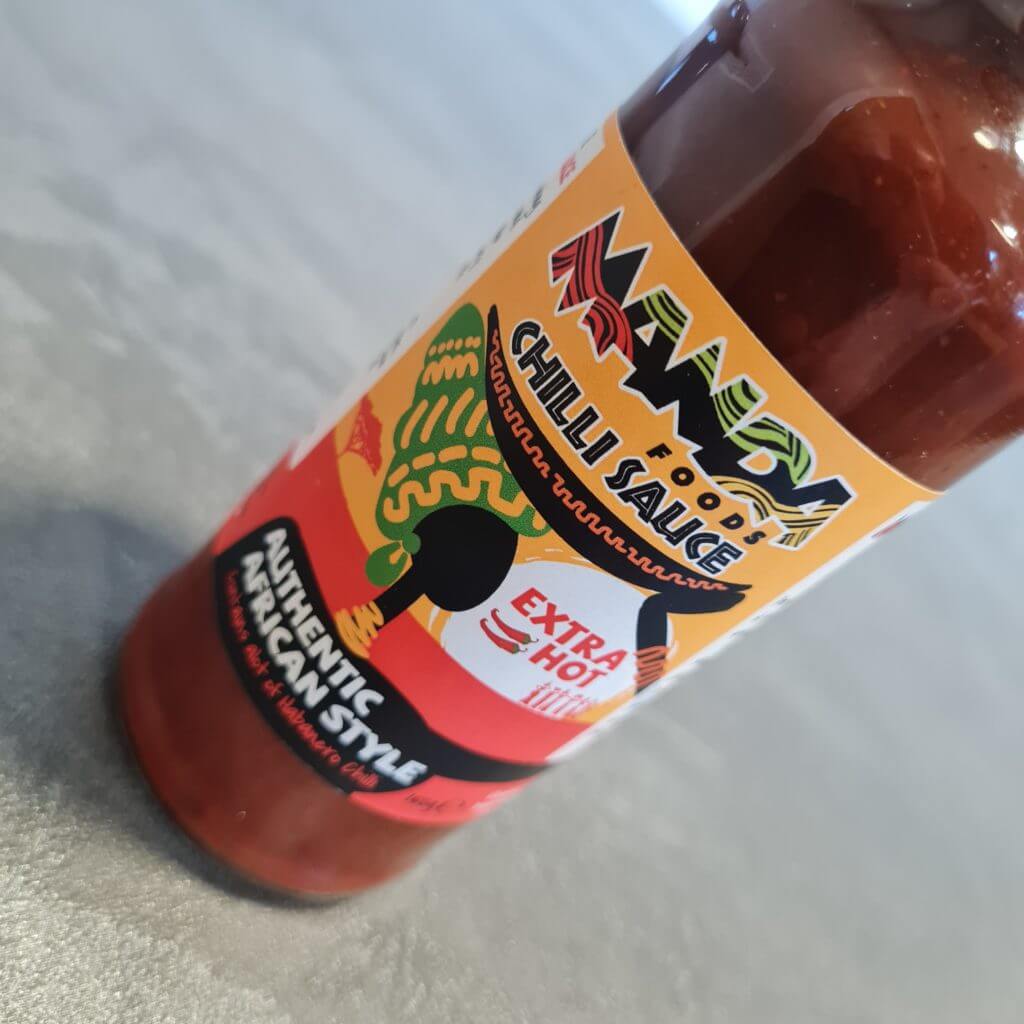
Food labels are a great way of advertising your product as consumers rarely buy something without knowing what’s in it. Quality packaging and clarity of information on the product label help the consumer make an informed choice and feel they are buying a great product. The label is part of your brand and product marketing.
Essential Basics
Here are some of the things you should think about displaying on your food labels.
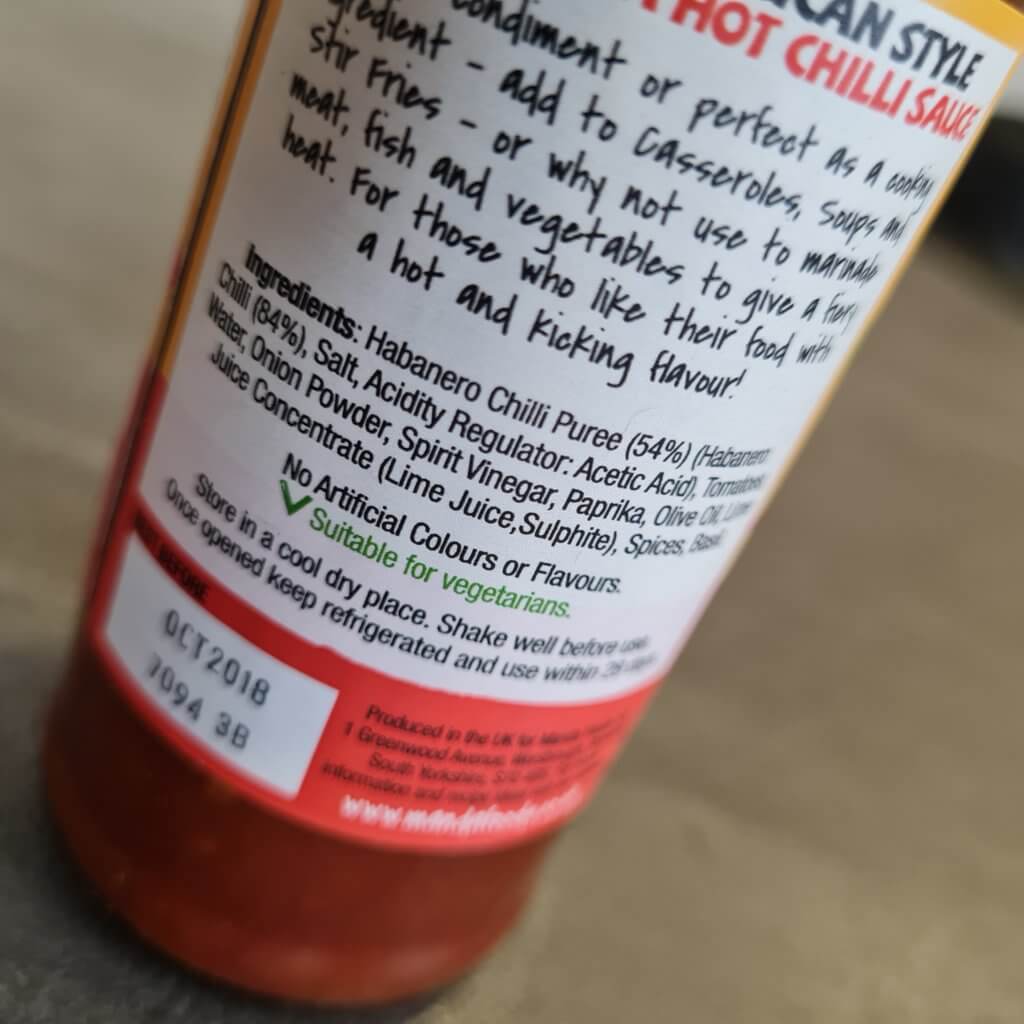
Nutrition and Dietary Advice
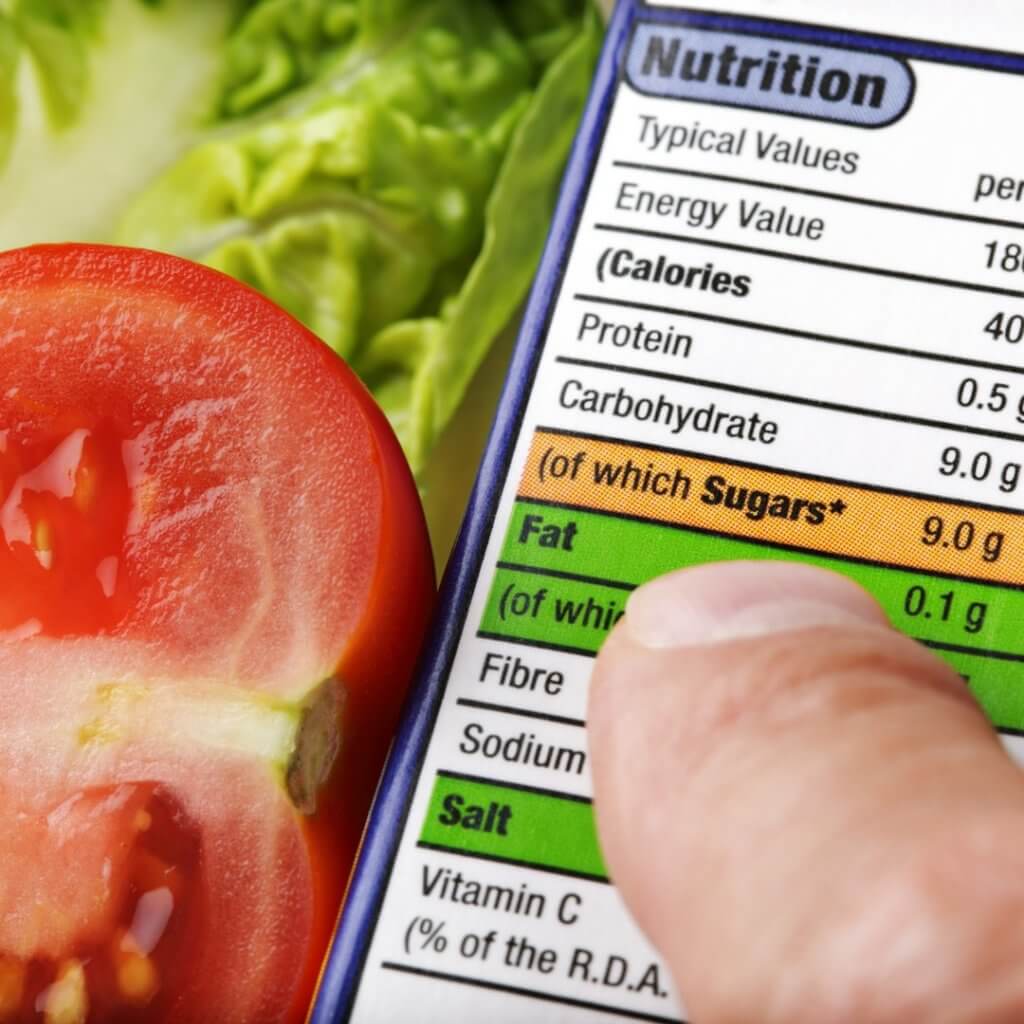
Since 2016, all pre-packaged goods have been required by law to provide nutritional information.
Customers have grown more interested in nutritional value, especially as awareness of food-related illnesses and health issues grow. Customers are making healthier choices.
What is Natasha’s Law?
Following the tragic death of Natasha Ednan-Laperouse, a girl who died as a result of an allergic reaction to a Pret a Manager baguette containing sesame seeds, the UK government announced that tighter rules were needed to safeguard people with allergies.
This came into effect in October 2021.
Any business producing food directly for sale is required to label it with the name of the food and a full ingredients list, with allergenic ingredients emphasised within the list. Find the PPDS toolkit at food.gov.uk